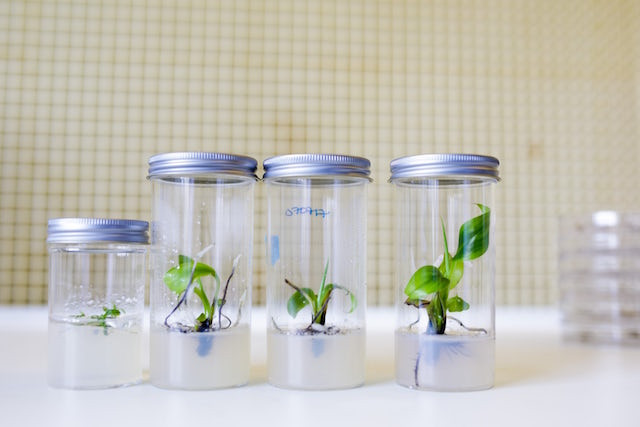While researchers have previously produced plants with specific traits through traditional breeding techniques, experts say new technologies such as the gene-editing tool Crispr-Cas9 could be used to bring about changes far more rapidly and efficiently.
It could, they say, potentially open the door to a new range of fruits and vegetables that look, taste and feel very different to those we are used to.
Gene-editing is already being used by scientists to change the characteristics of food. One such endeavour used Crispr to make mushrooms that don’t brown, while a team in Spain has been using the approach to try to produce wheat that can be eaten by people with coeliac disease. Still others are looking at using gene-editing to give crops resistance to particular environmental problems or pathogens.
Earlier this year, biotech firm Monsanto invested $125m in a new gene-editing company called Pairwise that reportedly has goals such as sweeter-tasting strawberries, while scientists in Japan have used the technique to produce seedless tomatoes. Another team have been using Crispr to change the architecture of tomato plant branches and the spacing of fruit.
Among the genes flagged in the new study in the journal Trends in Plant Science are those behind the production of a family of substances known as MYBs, which are among the proteins that control whether other genes are switched on or off.
“MYBs are great targets because they are central to several consumer traits or features like colour, flavour [and] texture,” said Andrew Allan, a co-author of the review from the University of Auckland whose own projects include working on red-fleshed apples and changing the colour of kiwi fruits. “Russet skin in apple and pear [is linked to MYBs]. Hairs on peaches but not nectarines – another type of MYB.”
Dr Richard Harrison, head of genetics, genomics and breeding at the horticultural organisation NIAB EMR, who was not involved in the article, said tweaking MYB genes or the way such genes are themselves controlled was a fruitful approach.
“For fruits,” he said, “MYB genes have long been known to be associated with expression of molecules such as anthocyanin, a red-coloured compound that gives strawberries or blood-red oranges their colour. “Increasingly, MYBs are being implicated in the production of other important compounds, hence the interest in this family of genes that are conserved between many plant species.”
Gene-editing of MYB genes and other genes could bring a host of benefits, Harrison said, adding: “There is a large opportunity to improve the nutritional profile of fruits and vegetables in the future using gene-editing technology, as well as other techniques.” Such techniques, he said, introduce the same sort of DNA changes as plant breeders have introduced by artificially selecting traits that cropped up through spontaneous DNA mutation – but much faster.
“Red-fleshed apples developed through conventional breeding have taken decades to even come close to market acceptability,” he said, “due to the multiple rounds of breeding and selection that have had to occur to take the naturally occurring red-fleshed gene variant from a wild species of apple and introduce it into a commercially acceptable variety.
“In our normal breeding work, we often see seedlings produced purely from conventional breeding with a range of colour and flavour profiles that simply never make it to the market, such as peach-flavoured strawberries [and] super-dark purpleish strawberries.”
The review is timely: next week the European Court of Justice will announce if or how plants that have been gene-edited using techniques such as Crispr will be regulated, and whether they will be treated like genetically modified plants. The US has already ruled against serious restrictions, provided the changes could have been produced through traditional plant-breeding techniques.
“We are interested in making produce more healthy, sustainable and convenient so that people will eat more produce,” Dr Haven Baker, Pairwise’s chief business officer, said, noting that gene-editing could be used to increase levels of anthocyanins, improve taste, increase shelf life, improve yields, boost disease resistance or even lengthen the season of availability.
Such approaches, said Baker, could not only boost consumers’ nutrient intake, but could also reduce food waste and produce adaptations needed to weather climate change: “We are trying to solve problems that matter to both consumers and the agricultural systems.”
Nicola Davis
